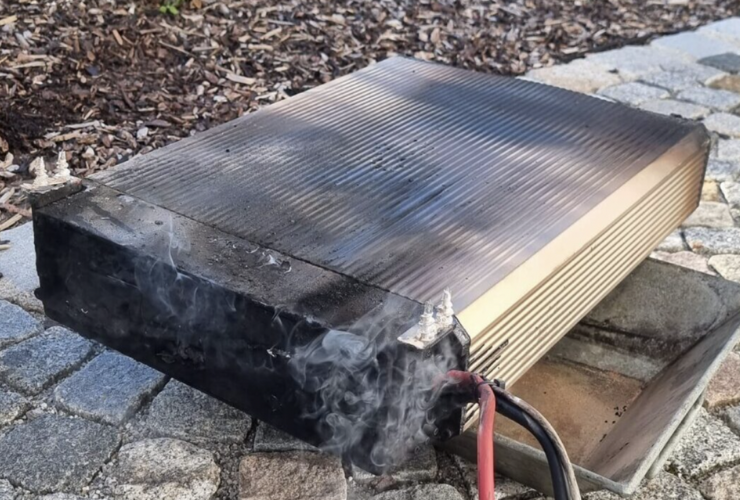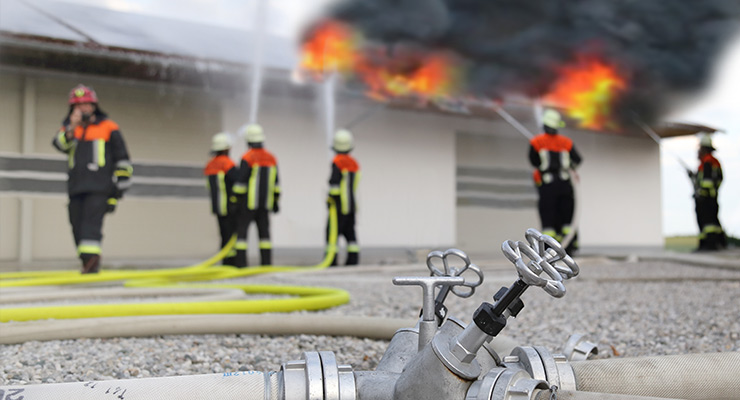Fast read
While it is technically possible for a home solar battery to explode, it is an extremely rare event in Australia. Modern batteries are built with multiple layers of safety features, and Australia's rigorous safety and installation standards like AS/NZS 5139 are specifically designed to prevent failures. The vast majority of lithium-ion battery fires are linked to smaller, unregulated devices like e-scooters, not professionally installed home energy storage systems.
Can home solar storage batteries explode?
It’s a question many homeowners consider when thinking about adding a battery to their solar power system: Is this large energy device in my home safe? News stories about fires from lithium-ion batteries in phones, laptops, and e-scooters can be alarming. It’s natural to wonder if the same risk applies to a home battery.
The straightforward answer is that while the risk is not zero, a catastrophic failure like an explosion from a properly installed, high-quality home battery system in Australia is exceptionally unlikely. Modern systems are engineered with sophisticated safety mechanisms, and Australia has some of the most stringent safety standards in the world to ensure your peace of mind.
Understanding the real risk: Thermal runaway
When people talk about a battery “exploding,” they are usually referring to a dangerous event called thermal runaway. This is a chain reaction where a battery cell overheats uncontrollably. The initial heat speeds up the chemical reactions inside, which generates even more heat, creating a rapid, self-sustaining cycle. This can cause the battery to vent hot, toxic, and flammable gases, and in the worst-case scenario, lead to a fire or explosion.
However, it’s crucial to understand what can trigger this event:
- Manufacturing Defects: Flaws inside the battery cell, such as a compromised separator between the internal electrodes, can cause a short circuit.
- Physical Damage: Puncturing, crushing, or otherwise damaging the battery can lead to an internal short circuit.
- Electrical Abuse: Extreme overcharging, over-discharging, or using an incorrect or faulty charger can stress the battery and generate excessive heat.
- External Heat: Placing the battery too close to a heat source or in constant direct, intense sunlight can cause it to overheat.
It’s important to differentiate home battery systems from the small, often unregulated batteries in consumer gadgets. Home energy storage systems (BESS) are far more robust and are equipped with multiple layers of defence against these triggers.
How Australian standards protect your home
Australia takes battery safety very seriously. Any battery storage system installed here must comply with a strict set of rules to be eligible for connection to the grid and for government incentives. The cornerstone of this is the Australian Standard AS/NZS 5139:2019.
This standard governs everything about the installation of a home battery system. It sets out requirements for:
- Location: Where a battery can and cannot be installed to prevent damage and ensure it’s away from heat sources and living areas.
- Ventilation: Ensuring adequate airflow to keep the battery operating within its ideal temperature range.
- Protection: Mandating physical barriers and specific clearances to protect the unit from impact.
- Signage and Shutdown: Requiring clear safety signage and accessible shutdown procedures for homeowners and emergency services.
To ensure compliance and safety, grid-connected solar and battery systems must be installed by a professional accredited by Solar Accreditation Australia (SAA). As of February 29, 2024, SAA is the new national accreditation body, taking over from the Clean Energy Council (CEC). Furthermore, starting July 1, 2025, the federal government’s “Cheaper Home Batteries Program” will extend Small-scale Technology Certificates (STCs) to eligible battery installations, providing an upfront discount. This incentive is only available for compliant systems installed by accredited professionals, adding another layer of regulated safety.
The role of modern battery technology in safety
Beyond installation standards, the battery systems themselves are designed with safety as a top priority.
Battery Management System (BMS): The BMS is the brain of the battery. It continuously monitors every aspect of the battery’s operation, including temperature, voltage, and current. If it detects any reading outside of the safe operating limits, it can automatically shut the system down to prevent damage or a thermal event.
Chemistry Choices: Most modern home batteries in Australia use Lithium Iron Phosphate (LFP or LiFePO4) chemistry. LFP is widely considered the safest and most stable type of lithium-ion battery because it is much less prone to overheating and thermal runaway compared to other chemistries like those often used in phones or electric vehicles.
Illustrative Brand Examples:
- Manufacturers are constantly innovating to improve safety. For instance, Sigenergy highlights a five-layer protection system in its SigenStor units, which includes temperature sensors, aerogel insulation pads between cells, and an internal fire extinguisher. This illustrates the multi-layered approach that quality brands take to prevent failures.
- Leading brands like Sungrow ensure their products, such as their SBR high-voltage battery series, are certified to multiple international and Australian safety standards, including IEC 62619 and VDE 2510-50, giving homeowners an extra layer of confidence.
Putting the fire risk into perspective
While headlines can be concerning, data shows that professionally installed home battery systems are not the primary cause of lithium-ion battery fires. While the total number of lithium-ion battery incidents reported by Fire and Rescue NSW for 2023 varies between 272 and 285, depending on the source, the data consistently shows that home energy storage systems are rarely the cause. In 2023, there were only three reported fires involving residential battery systems in New South Wales. The overwhelming majority of incidents were linked to micromobility devices like e-scooters and e-bikes, which are often less regulated.
In 2023, Australia saw a record of over 57,000 new home battery installations. The small number of related fires in NSW, the state with the most detailed public data, indicates an incredibly low incident rate—approximately 0.0053% of new installations nationally in 2023—a testament to the effectiveness of Australia’s strict standards and the quality of modern battery systems.
Questions to ask your installer
To ensure you are getting the safest possible system, empower yourself by asking your accredited installer these key questions:
- Is the battery and inverter you are quoting compliant with all current Australian Standards, including AS/NZS 5139?
- Are you and your business accredited with Solar Accreditation Australia (SAA), the current national body?
- What is the battery’s chemistry (e.g., LFP)?
- Can you explain the safety features of the battery’s management system (BMS)?
- Where is the safest and most compliant location to install the battery at my property?
- What is the official warranty and support process for this battery in Australia?
Your next steps to a safe energy future
While the thought of a battery explosion is confronting, the reality is that for Australian homeowners, it is an extremely low and well-managed risk. By choosing high-quality, compliant products and insisting on an SAA-accredited installer, you are protected by multiple layers of safety regulations and advanced technology.
The key is to work with professionals who prioritise safety and quality. If you’re considering a solar battery, the focus should be on making an informed decision, not on fear.
If you need assistance in finding trusted, local, and accredited battery installers who can answer your safety questions in detail, Your Energy Answers provides a free service to connect you with vetted experts in your area.





